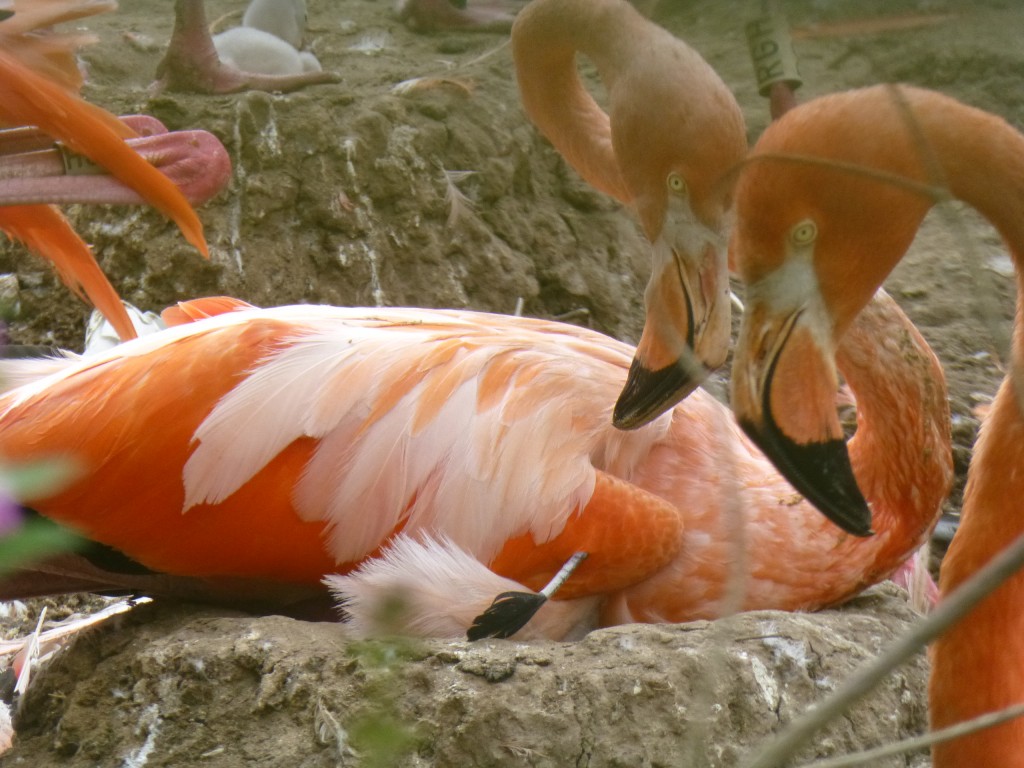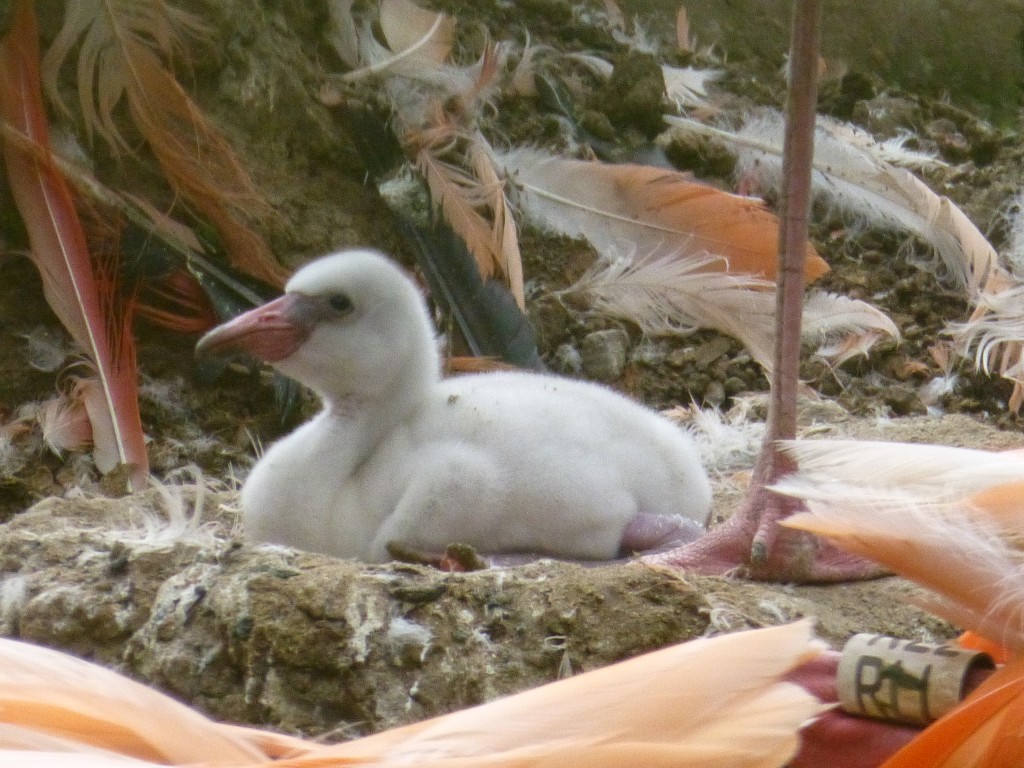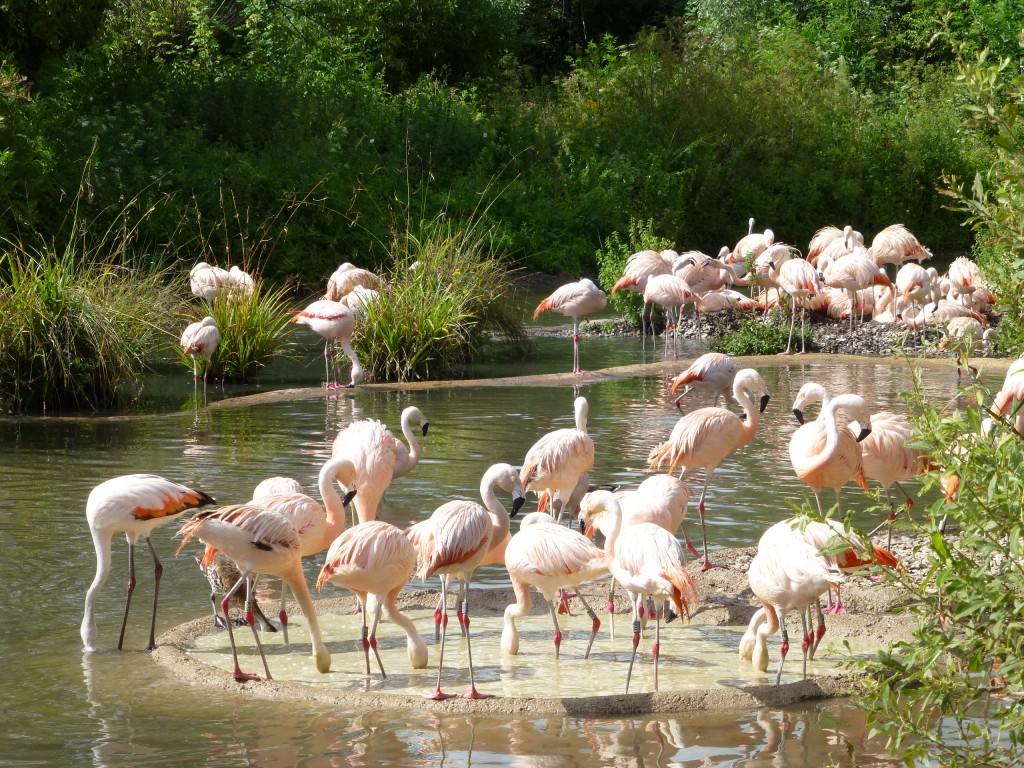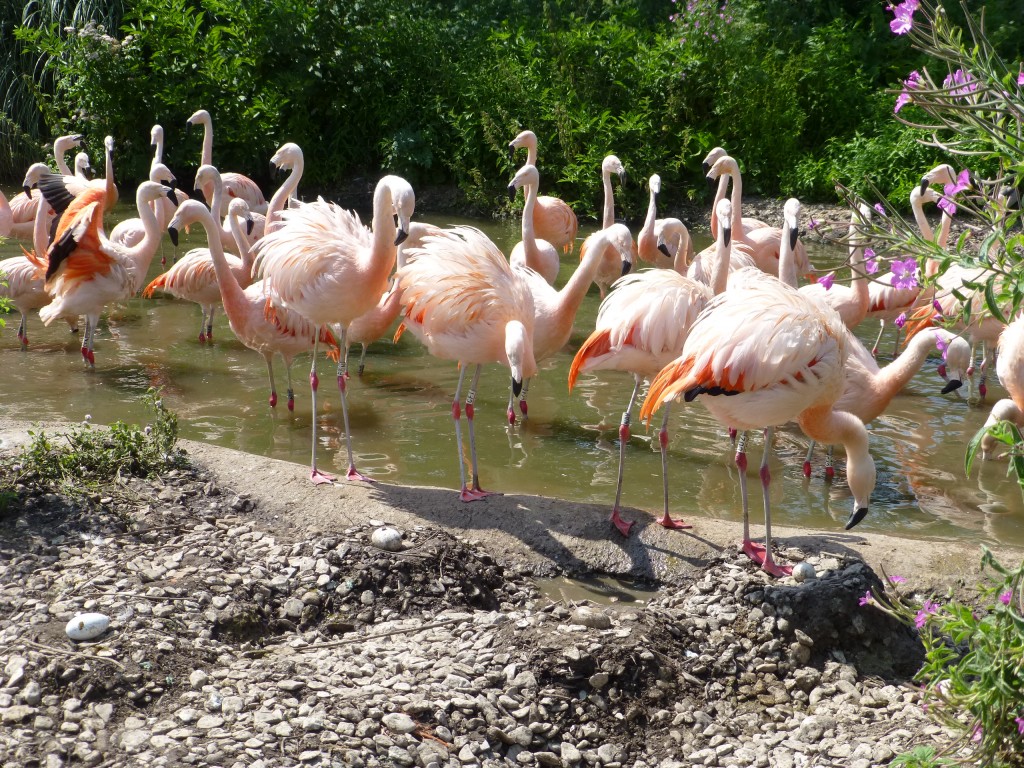2014 Breeding Update
There's many a cute Caribbean flamingo chick to be seen wandering around the enclosure opposite the Slimbridge restaurant. With nine chicks raised this year it's been a good one for the Caribbeans. Nesting way at the back of their pen, tucked away and out of sight, the nests and eggs (and chicks) have been kept sheltered from the worst of the summer (?!) weather, cue Hurricane Bertha (!) and out of the attention of the prying eyes of gulls, crows and herons.


Flamingo chicks have very soft, squidgy legs when they are hatched. They have an egg about the same size of a goose's and their youngster is comparatively large when hatched. This means that it needs to fit inside a rather cramped space by the time the one month incubation period is up. As such, the young flamingo's legs are full of fluid to help pack it all inside the shell. Therefore the legs are not strong enough to support the chick when it first hatches. It takes time for the chick to learn to support its weight and to walk properly before it can safely leave its nest.
Flamingo chicks are called precocial. Which is a posh science speak for "not stuck in the nest until you can fly". Birds like a blue tit or a blackbird, for example, are what we term altricial. Hatched blind, naked and helpless, these chicks stay in one space and are cared for by their parents until they can leave the nests at an adult size. Human babies are also altricial. It is the price we pay for such big heads to house such large brains. And consequently we have to look after our own children for the next 18... make that 21, maybe 30? Probably 40 years ;-) The precocial nature of flamingo chicks means that they are free to follow their parents around and do not need to be tied to one place. In the wild, flamingos can move their youngsters to new feeding and watering areas when they are old enough to do so. If environmental conditions are not good for the chick's survival. They don't fly (obviously) so the adults walk with them for many miles until they find a safe, new home.
If you want to know more about these types of precocial chicks and why wildfowl have such adorable downy youngsters, then make sure to read Duckery Warden Phoebe's Duck Diary that will explain a lot more on the subject. http://www.wwt.org.uk/wetland-centres/slimbridge/diaries/phoebes-duck-diary/
And what of the other flock in breeding mode, those down in South America? The first Chileans are due to hatch any time soon. So watch this space for updates on youngsters in that flock. They have laid a vast quantity of eggs this year and the hope is to see how many are fertile and then think about moving these eggs between different collections. This helps keep the gene pool of the species in captivity strong and allows for a more sustainable population to be held in a wide range of animal collections. To coin an apt pun, it is always best to not have all of your eggs in one basket!

To end this post, a big shout out to Phil who goes out of his way to include me in all of the fun stuff that goes on with the birds, and who indulges my geeky interest in all things flamingo. Especially letting me peek behind the scenes to see new chicks and birds on nests, as well as help collect new eggs and put ready-to-hatch eggs back on nests. It's a really cool thing to help out with.




